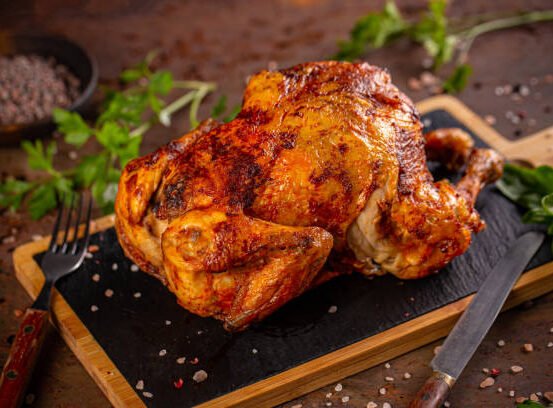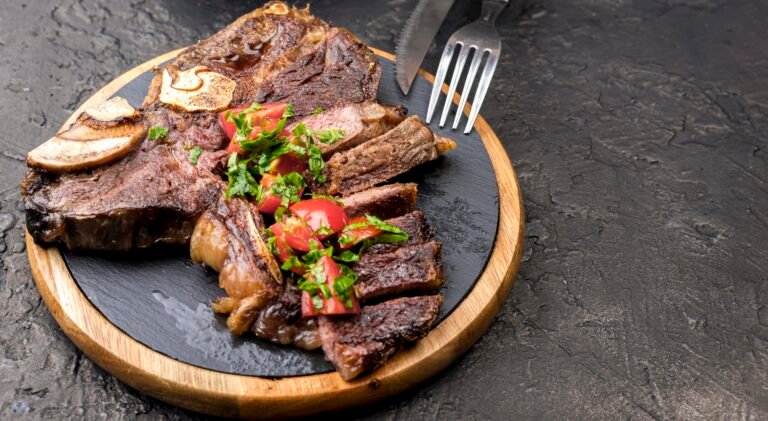Meet Food 1 New Way to Experience Culinary Diversity
Uncover a whole new way to enjoy diverse meat food dishes from around the world. Unlock bold flavors and cultural richness in every bite!
Connecting with Food and Dishes
The idea of “connecting with food and dishes” highlights the significance of getting to know our food on a more personal level. It encourages people to value the ingredients and the people who made them in addition to the tastes and textures of their food.
Diners are encouraged to acknowledge the lobar-intensive efforts of farmers and producers by comprehending the food’s journey from farm to table. By connecting us to the tales, customs, and cultural importance associated with the food on our plates, this connection cultivates mindfulness in eating and a sense of respect for the food we eat. You should also try Smoked steak strips recipe. Smoked steak strips are delicious and savoury addition to any meal
Focus on Authenticity, Sustainability, and Transparency
“Meet Food” can be enjoyed by many types of diners, from high-end places to coxy farm coffee shop.No matter the setting, the main focus is on offering an original and relevant dining experience.
From Fancy Restaurants to Farm Cafes
“Meet Food” is served in a variety of settings, including upscale eateries and quaint farm cafes. Providing a genuine and meaningful dining experience is the main goal, regardless of the environment.
The Story Behind the Dish:
The presentation of dishes is also influenced by this tendency. The manner that food is served enters into the narrative, with shared tables promoting conversation and a cosy, friendly ambience. Wooden tables and benches, together with other rustic table accents, contribute to a laid-back, familial vibe. Must try prawns.
Tableware that Connects You to the Dish:
Simple, rustic tableware strengthens the link between the dish and its narrative. Because the plates and bowls are meant to be shared, it’s simpler to try a variety of foods and enjoy them with others. The concept of heritage and workmanship is further emphasise by regional crafts and decor.
Related Food Trends:
The “Meet Food” movement is associated with the ideas of “nose-to-tail” and “farm-to-table”. “Farm-to-table” refers to the practice of sourcing food directly from neighbouring farms, guaranteeing its freshness. Using every portion of an animal in the kitchen to cut down on waste and foster appreciation for the components is known as “nose-to-tail” cooking. You should try green vegetable-based salads.
Concept Examples:
- Garden of Exoticism: A vibrant platter of sashimi, fried fish skin, and other delicacies presented on white porcelain in the Nordic style. Sleek silverware and elegant wine glasses allow the cuisine to truly shine. Purely Fresh is a dish that combines a rustic, homey feel with contemporary white plates and highlights locally sourced, fresh ingredients in a beef tartar and celeriac steak.
- Beautiful Set: A vegan duck breast cooked with celery root, served on a chic bone china dish with exquisite crystal and unusual silverware.
- Savouring mindfully: Served on retro-style dishes with silver flatware, vineyard snails with herb butter honouring local fare.
- Light Food: A dish that has been disassembled to provide a light and airy dining experience. Individual ingredients are arranged on organic-shaped plates with delicate glazes in earth tones.

Conclusion:
Meet Food is a novel and significant dining experience that transcends simple consumption. It’s about developing a close relationship with the ingredients, the producers, and the narratives that accompany each dish. This style creates a distinctive experience that can be enjoyed in both upscale restaurants and quaint farm cafes by promoting authenticity, sustainability, and transparency.
Meet Food encourages guests to appreciate the food they eat and the workmanship involved in its development by emphasising mindful eating and respect for local products. Along with kindred movements like “nose-to-tail” and “farm-to-table,” this movement promotes a greater understanding of the influence of our dietary decisions.
FAQs:
How is meat prepared differently in various cultures?
In Asia, meat is often stir-fried or grilled with spices. In the West, it's roasted or smoked. African cuisine uses slow-cooking with herbs, while Middle Eastern dishes often involve marination and grilling.
Which countries have the most diverse meat cuisines?
India, China, Mexico, Turkey, and the USA are known for their rich variety of meat-based dishes, reflecting regional spices, techniques, and traditions.
What are some unique ways to cook meat at home?
Try slow-cooking in a crockpot, oven-roasting with herbs, grilling with marinades, or using an air fryer for a healthy twist. Each method brings out different flavors.
Is meat a staple in all culinary traditions?
Not always. While many cultures rely heavily on meat, some — like Indian vegetarian regions or Buddhist cuisine — focus on plant-based foods. Still, meat holds major importance globally.
What are the healthiest meat dishes globally?
Grilled chicken skewers (Japan), tandoori chicken (India), steamed fish with herbs (Vietnam), and lean beef stir-fry (China) are healthy and flavorful options.
How do spices vary in global meat recipes?
Indian dishes use turmeric, cumin, and chili. Mexican meat recipes feature paprika and oregano. Middle Eastern meats use sumac and za’atar, while Western ones often use rosemary, garlic, and black pepper.
What’s the best way to explore international meat flavors?
Try cooking one new meat dish each week from a different country. Follow food blogs, YouTube recipes, or attend cultural food festivals to expand your taste.
Are there meat-based street foods worth trying worldwide?
Absolutely! Don’t miss shawarma (Middle East), tacos al pastor (Mexico), satay (Indonesia), gyro (Greece), or beef skewers (Nigeria). Street food offers authentic flavors.
How can I cook meat like chefs from other countries?
Start by using traditional spices and cooking methods. Watch tutorials, take online masterclasses, or follow authentic recipe books. Practice makes perfect







